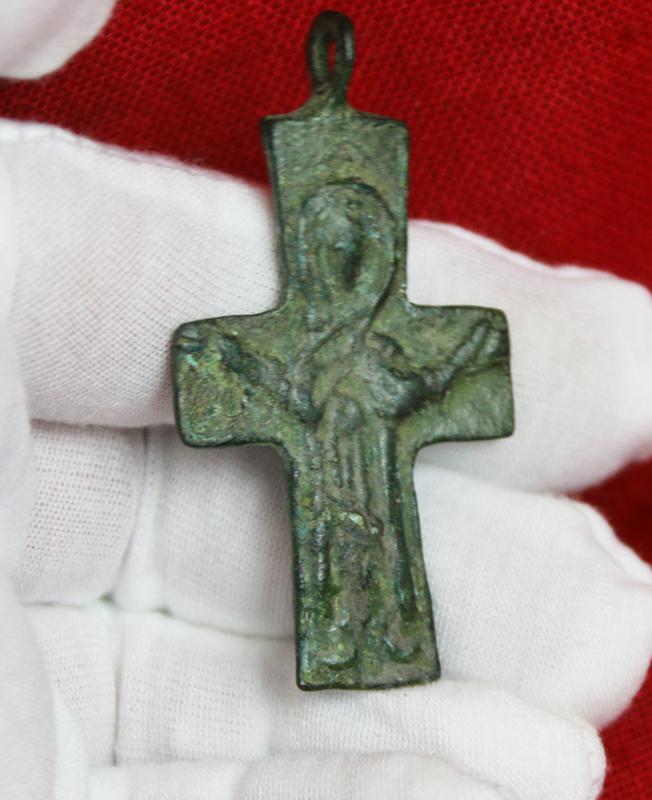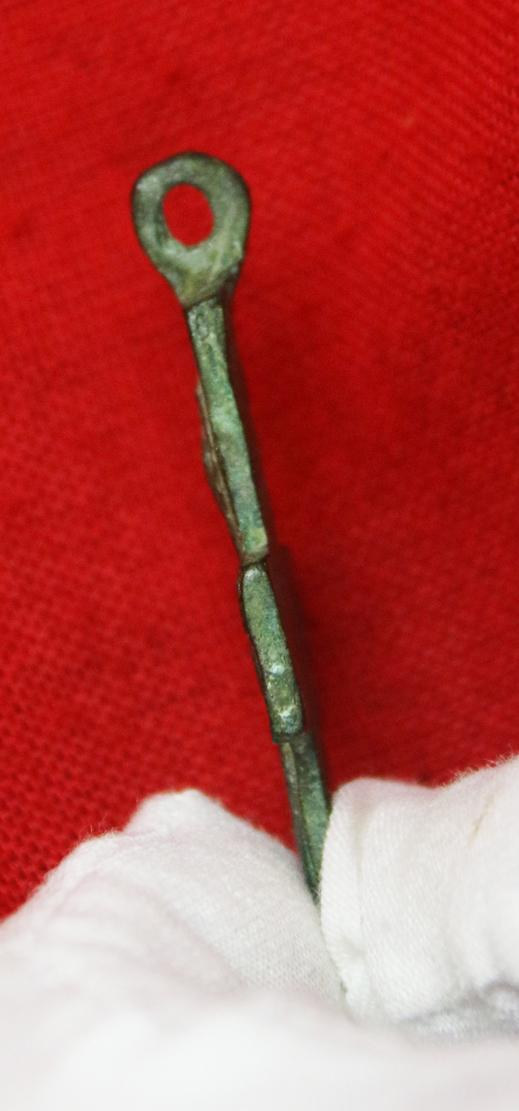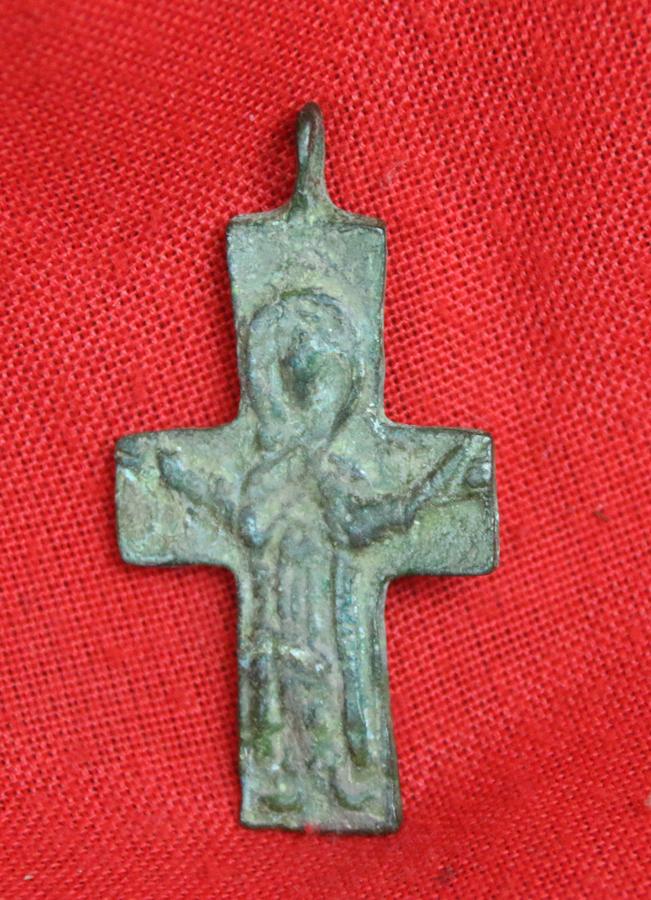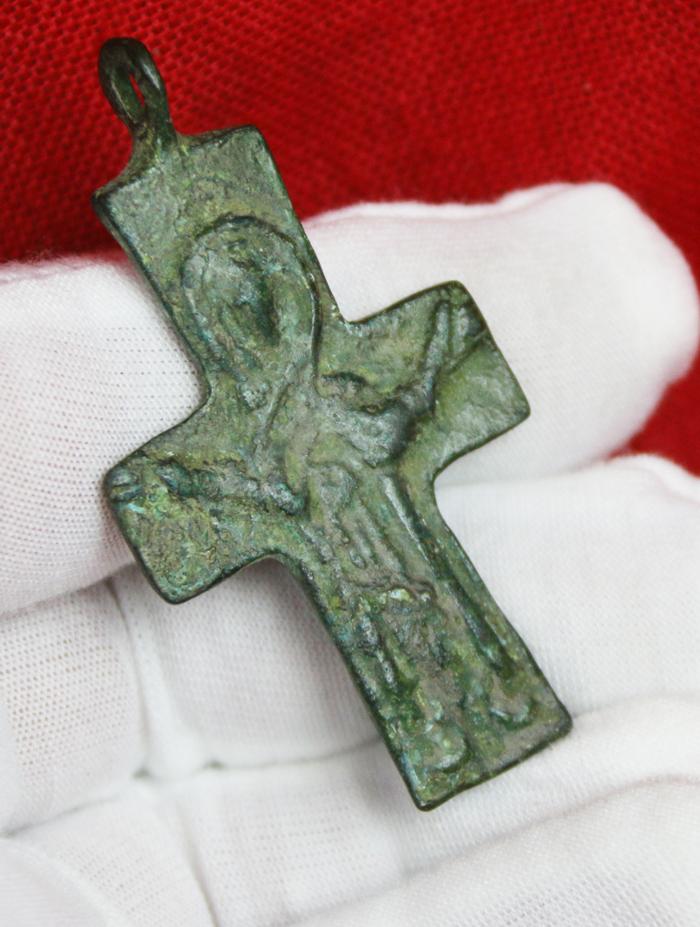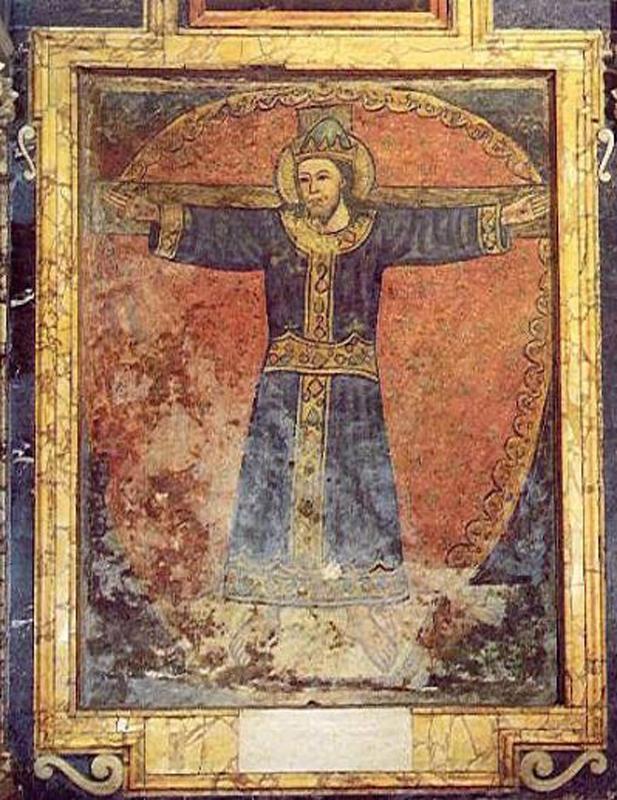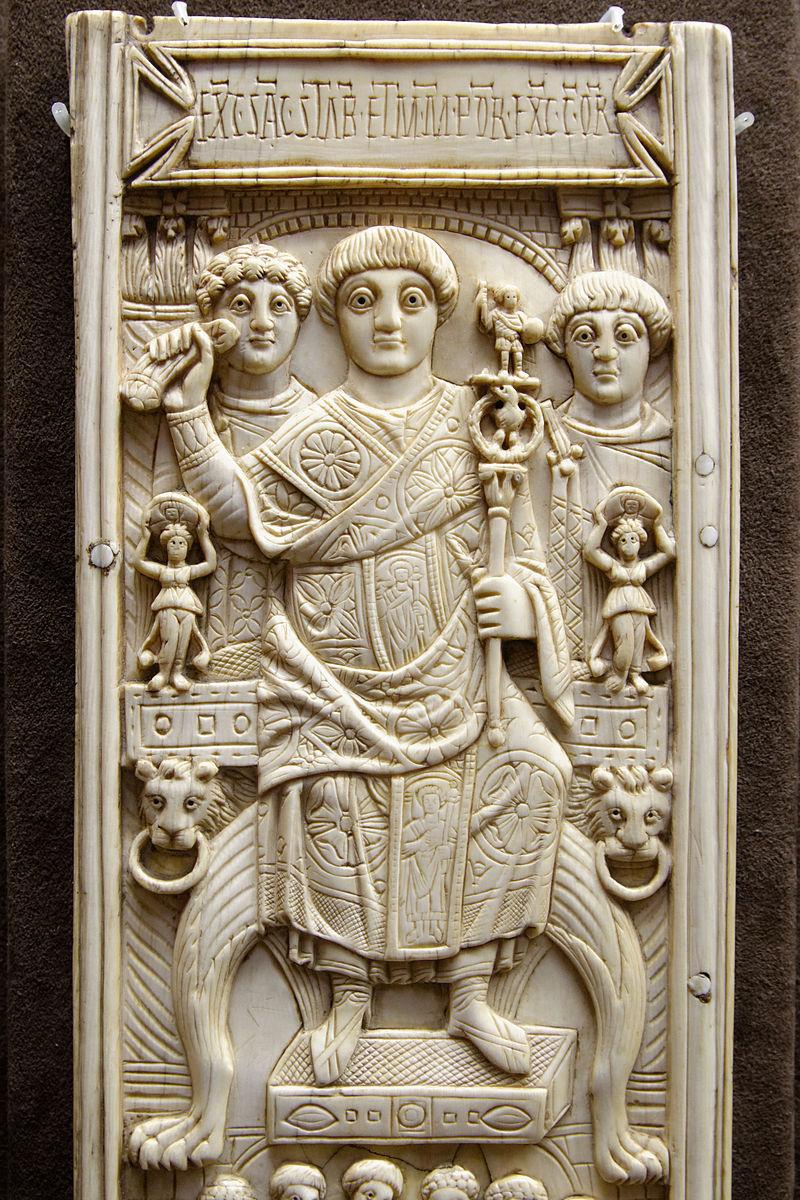A Beautifully Detailed Early Christian, Ancient Roman Crucifix, Byzantine Empire, 8th to 9th century, Circa 1300 to 1200 Years Old
Bronze crucifix of Christ in the relief relief orans pose of arms outstretched.. A superb, small collection of original, historical, Imperial Roman, Viking and Crusades period artefacts has been acquired by us and will be added over the next week or so. This fine bronze pendant cross was hand forged during the Middle Ages in the cradle of Christianity, the Byzantine Empire. In AD 324, the first Christian Roman Emperor Constantine the Great transferred the Eastern Roman Empire capital to Byzantium, which became Constantinople, known as ''New Rome''. The Byzantine Empire became centred on the capital of Constantinople and was ruled by Emperors in direct succession to the ancient Roman Emperors. With the eventual decline of Rome, the Church of Constantinople became the richest and most influential center of the Christian world. The reign of Justinian the Great in 527-565 marked a blossoming of Byzantine culture with a building program that yielded such masterpieces as the Cathedral Church of the Holy Wisdom of God, Hagia Sophia. Justinian, who is considered a Saint in the Eastern Orthodox Church, created the authority of this Church, which firmly established Christianity throughout the Empire. This Byzantine Empire would exist for more than a thousand years until 1453 and was one of the most powerful economic, cultural, and military forces in Europe and Asia Minor. This superb cross was most certainly worn by a Byzantine citizen as a statement of faith during this amazing age of early Christendom. Picture in the gallery of an 8th century painting 'Christ is the Crucified, and a King'. The details of the painting are, they say; 'He is robed in majesty; He is fastened to the Cross. He wears the royal purple robes with which His scorners intended to mock Him, but He, Alpha and Omega, the first and last Word, the Primogenitor of those who are being saved, confers His own divine dignity onto the very idea of kingship. He wears the glory that inspired the good thief to plead for his salvation, with the confidence of the One whose Sonship makes that salvation possible'.
Richard Lassels, an expatriate Roman Catholic priest, first used the phrase “Grand Tour” in his 1670 book Voyage to Italy, published posthumously in Paris in 1670. In its introduction, Lassels listed four areas in which travel furnished "an accomplished, consummate traveler" with opportunities to experience first hand the intellectual, the social, the ethical, and the political life of the Continent.
The English gentry of the 17th century believed that what a person knew came from the physical stimuli to which he or she has been exposed. Thus, being on-site and seeing famous works of art and history was an all important part of the Grand Tour. So most Grand Tourists spent the majority of their time visiting museums and historic sites.
Once young men began embarking on these journeys, additional guidebooks and tour guides began to appear to meet the needs of the 20-something male and female travelers and their tutors traveling a standard European itinerary. They carried letters of reference and introduction with them as they departed from southern England, enabling them to access money and invitations along the way.
With nearly unlimited funds, aristocratic connections and months or years to roam, these wealthy young tourists commissioned paintings, perfected their language skills and mingled with the upper crust of the Continent.
The wealthy believed the primary value of the Grand Tour lay in the exposure both to classical antiquity and the Renaissance, and to the aristocratic and fashionably polite society of the European continent. In addition, it provided the only opportunity to view specific works of art, and possibly the only chance to hear certain music. A Grand Tour could last from several months to several years. The youthful Grand Tourists usually traveled in the company of a Cicerone, a knowledgeable guide or tutor.
The ‘Grand Tour’ era of classical acquisitions from history existed up to around the 1850’s, and extended around the whole of Europe, Egypt, the Ottoman Empire, and the Holy Land.
58mm x 31mm Still perfectly wearable.
Code: 24083
Price
on
Request


